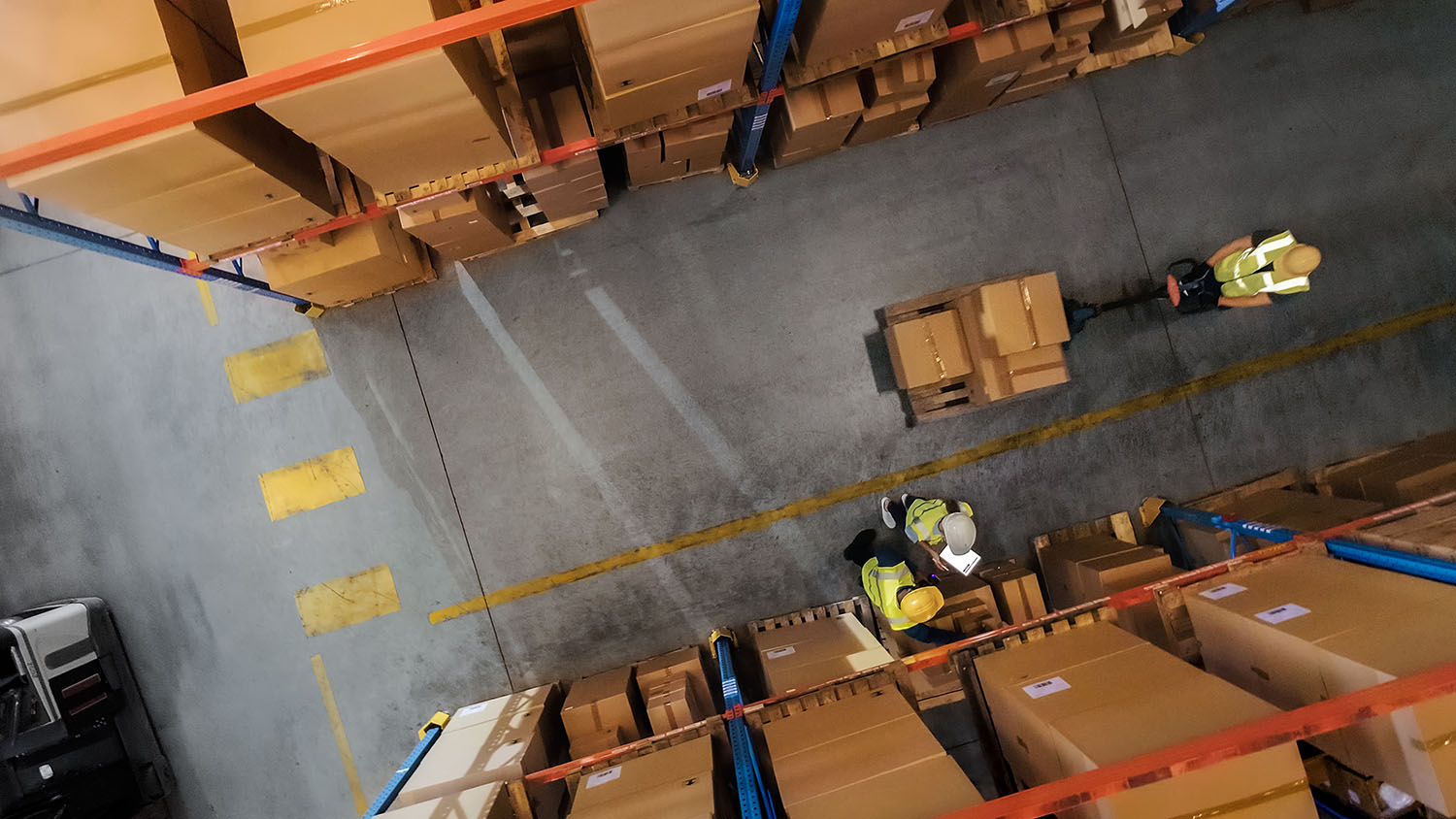Time is money in the supply chain business. The faster you can deliver products, the more people can trust you, and the more successful your company will be.
To stay ahead of the competition, warehouse managers and logistics companies are constantly looking for ways to improve productivity, and wave picking has become a popular strategy.
But what is wave picking, and how can you implement it in your warehouse to improve operations?
In this article, we will answer these questions and explore the best wave-picking software to manage orders and improve productivity.
What is Wave Picking?
Wave picking involves fulfilling orders in different “waves” of effort calculated so each picker and the whole warehouse operate as efficiently as possible.
Waves are orders grouped by similar properties: location in the warehouse, size of the product, or whether the order is high- or low-priority, or due date, or a combination of factors.
It can also be more efficient than other methods like zone picking, where each picker is assigned a specific area of the warehouse to pick items only from that zone.
Wave Picking vs. Batch Picking
Batch picking involves grouping orders into batches and giving them to pickers (employees who gather items from shelves). It is a simple process that only requires a spreadsheet or clipboard, but it may leave a picker assigned to a batch of five orders located in different parts of the warehouse. This leads to a lot of back-and-forth travel across the warehouse, wasting time.
On the other hand, wave picking involves grouping orders into waves based on the key metrics that the warehouse needs to hit (speed, deadlines, labor costs, and avoiding mistakes), then assigning them to pickers. Although it requires more time for setup, if you properly optimize your system, you can fulfil more orders with fewer hiccups of missed deadlines and convoluted picker routes.
How the Wave Picking Process Works
Effective wave picking typically involves employing a solid warehouse management system (WMS) to separate orders into different waves. The WMS software helps you calculate the type of wave you need and then the best route for the staff to pick up the products quickly and efficiently. Once the orders are complete, they can move on to the next wave.
Designing your wave groupings
The type of wave you need will depend on factors like product type, due date, order size, etc. So, if you have many high-priority orders, it makes sense to group them into the same wave. If you have orders of different sizes and due dates, it may make more sense to group them into many smaller waves.
- Similar products: You can group items into waves by keeping similar products in the same warehouse location. For example, you can design a wave around bulky or dangerous products so they are picked at once.
- Shipping schedules: For example, same-day, next-day, or express-delivery products will have different pickup times and, therefore, could be in different waves.
- Carriers: If you use multiple carriers, it makes sense to design waves and to group orders according to their specific carriers to save time and avoid multiple trips.
- Available workforce: For large warehouses, designing your waves to take advantage of full staffing or to match limited staff ensures you are reaching your targets without shift changes during picking, as this could increase errors.
- Shipping priorities: You can design waves around your shipping priorities. For example, if perishable goods or special orders need to be shipped first, create waves to tackle these orders first.
These grouping strategies can be combined depending on the warehouse’s current needs. The goal is always to plan and design your waves logically to improve efficiency.
The wave picking process generally requires software because it encompasses multiple stages of work, not only grouping orders into waves but then the picking, receiving and shipping. Doing this calculation manually is time-consuming and causes information to slip through the cracks.
Pre-wave picking
Before pickers begin actually picking orders, you need to group orders into waves based on factors like location, due date, availability, and others. This grouping process, sometimes called “pre-wave picking,” helps ensure that pickers have pick lists optimized so they complete each wave efficiently.
This grouping process can be very time-consuming when done manually. So, a powerful WMS helps create an effective picking schedule by grouping orders based on the variables you’ve chosen.
Performing wave picking
Pickers go through the warehouse with pick lists and collect all the items in each wave using a mobile scanner linked to the WMS, which tracks the entire process. The pick list lets them know the quantity and SKU to pick, one by one, until all the orders are complete.
Post-wave picking
Mobile scanners make it easy for pickers to keep orders separate, then prep and organize them for shipping. The process may also involve double-checking to ensure that every order and the packaging for shipment are correct.
How to Implement Wave Picking Strategy in Your Warehouse
This strategy is not one-size-fits-all. Instead, you design your strategy based on what your warehouse needs at any given moment.
Here are some of the straightforward ways to implement wave picking:
Understand wave picking
Your warehouse staff need to understand the concept of wave picking and how it can improve workflow. This will help them trust the waves and pick items as directed because the strategy makes their work more straightforward.
Consider your warehouse layout
Map out your warehouse and find the areas with the most traffic and frequently picked items. This way, you can create the most efficient travel paths for pickers. You can do this with Da Vinci Unified’s Directed Putaway feature. This feature uses algorithms to determine the best location in the warehouse to store incoming goods, so your team can maximize space and reduce handling time.
Set up wave criteria
Set up the criteria that apply to your orders. This involves categorizing your orders according to their delivery location, deadlines, and whether they are similar products and creating waves that match these criteria.
Invest in Technology
Wave picking involves a lot of variables, one that humans simply cannot manage without error. Da Vinci WMS significantly improves order picking by reducing walking paths and streamlining the picking process. This tool also has an auto-packing feature that chooses the most seamless way to pack an order while considering space usage and reducing shipping costs. Da Vinci also tracks serial numbers accurately until the order reaches its final destination.
Train your team
Train your staff or pickers on the new process. To avoid errors, teach them how to use WMS tools and other devices, such as the mobile barcode scanner.
Schedule picking waves
Aligning picker shifts with waves that require special training, such as forklift usage or specific technology, will result in a more efficient process. Having the most capable hands address each situation will result in higher productivity.
Test and adjust
Use the process on a small scale while monitoring its effectiveness. Metrics like picking time and order accuracy can help you tweak where needed and optimize for large-scale use.
Tips to Improve Your Wave Picking Process
The value of your wave-picking process usually lies in how well you plan each wave and execute it. You can improve your process by:
Choosing an effective WMS
Many factors can influence your wave-picking process, such as the product, your staff, and your product location. You need an effective WMS to distill all these factors into a workable plan. This is why Da Vinci’s Wave management system is perfect. This software can employ advanced analysis and reporting tools to give you a comprehensive view of your warehouse, operations, and labor while picking up trends and patterns.
Set your expectations
Set a goal on when packaging will leave the warehouse or arrive at its destination. Whether orders are sent out on the same day, next day, or in the future, your strategy should determine how the orders will be processed in time to meet those deadlines.
Adjust to the best picking strategy
If you have large items to be picked, align worker schedules to ensure forklift-trained staff are available. If you’re having a light season with fewer orders, choose a single-order picking rather than wave picking. A WMS can help warehouse managers determine the best strategy per season.
Advantages of Wave Picking
Wave picking has a lot of benefits over traditional order processing methods. Some of the really important advantages include:
Punctual shipment
For more complex warehouse operations, wave picking helps ensure that orders are planned and meet deadlines without any errors.
Better for avoiding spoilage
Wave picking is better for food orders and items prone to spoilage. When you group items based on priority, they can be shipped quickly, reducing the chance of spoilage or expiration.
Higher productivity
When you put orders into similar groups, you can increase the number of orders fulfilled at once. This can eliminate repeated trips to the same location and reduce urgency for high-priority packages, which increases productivity.
Saves cost
This order fulfilment method requires fewer pickers and less time to pick up the orders. It allows you to manage your resources and maximize profits.
Improved efficiency
By strategically grouping orders, you can reduce aisle congestion and the chances of forklifts blocking access to the goods. This creates room for pickers to access the items and move faster.
Disadvantages of Wave Picking
Despite the great benefits you can gain from warehouse wave picking, there are still limits to the process process reported by warehouse managers:
Limited flexibility
Once a wave is set on predetermined criteria, it is locked in and cannot be adjusted. So you cannot make any last-minute changes to orders. Businesses with orders that change often may have an issue with this. ,
Complexity
The process can be more complex than other picking methods as it requires a barcode scanner,multi-tote carts, and other equipment requiring staff training.
Increased setup time
Wave picking needs more time to set up as each wave must be created and matched accordingly. If you try to do this manually, you may run into errors. You can minimize this possibility by using Da Vinci Wave Management System with an automatic system.
Wave Picking FAQs
What is wave picking in a warehouse?
Wave picking involves grouping orders into waves based on criteria such as due date, product size, location, and priority, then picking one wave, or group of orders, after the other to maximize the warehouse’s efficiency and ability to hit shipping deadlines.
How can wave picking reduce labor costs?
With Wave picking, workers can pick multiple items at once which means fewer employees are needed on the floor at any given time, resulting in lower labor costs.
Is wave picking the same as zone picking?
No, they are not the same. Zone picking involves dividing your warehouse into zones, while wave picking involves grouping orders based on their similarities and setting a pick-up time.
Maximising Warehouse Efficiency with Wave Picking
Warehouse wave picking is possible when the right software is applied. With the right WMS, you can efficiently analyze your warehouse layout and decide on the best path for pickers, which makes shipping processes easier.
The Da Vinci wave picking feature for 3PLs considers complex scenarios so you can handle different client requirements and meet their deadlines. If you’re looking to try out a warehouse management system that excels at wave picking, request a demo today.



